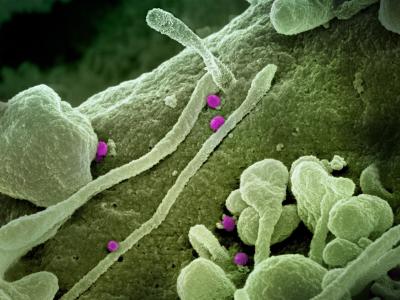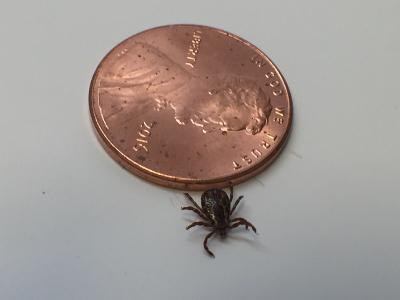A NIAID research team has developed an additional nonhuman primate study model for Crimean-Congo hemorrhagic fever (CCHF), providing an alternative for development of critically needed vaccines and therapeutics. They hope the effort, described in a new study published in npj Vaccines, will lead to a widely available replicating RNA-based vaccine that they are testing against CCHF. In some outbreaks CCHF has had a case fatality rate up to 40%.
Cynomolgus macaques (CM), which typically develop mild to moderate CCHF disease, are the preferred model available to study how the virus causes infection and disease in people. During the COVID-19 pandemic, however, CMs were prioritized for other research, and scientists at NIAID’s Rocky Mountain Laboratories (RML) sought to develop an alternative model using rhesus macaques (RM) to continue promising pre-clinical work on a CCHF vaccine.
CCHF virus primarily is spread by Hyalomma ticks throughout Africa, the Middle East, Asia and parts of Europe. The disease, first described in 1944, infects up to 15,000 people annually, according to the World Health Organization. About 1 in 8 of those who are infected develop severe disease, which leads to about 500 deaths each year. A vaccine developed in 1974 in Bulgaria is available in some places but has not been approved by the U.S. Food and Drug Administration or the European Medicines Agency. The World Health Organization lists CCHF virus as a priority pathogen for development of vaccines.
The RML group in Hamilton, Montana, has worked with University of Washington and HDT Bio collaborators in Seattle for about 6 years on developing and evaluating the replicating RNA vaccine platform for SARS-CoV-2 and CCHFV. A collaboration between NIAID, HDT Bio and the University of Texas Medical Branch was recently awarded more than $80 million dollars in funding by the Department of Defense to advance the replicating RNA vaccine for CCHFV and Nipah virus into human clinical trials.
The researchers decided to try and adapt their CM study model to infect RMs. CMs and RMs are the two most commonly used research animals among the 22 different macaque species. RMs infected with CCHFV developed mild-to-moderate disease, similar to the CM model and consistent with mild-to-moderate disease in humans.
The scientists then used a prime-boost schedule to show that the experimental vaccine provided six infected RMs with a protective immune response that controlled CCHF virus. The results are consistent with their findings using CMs and support continued advancement of this vaccine into human trials.
Future work with the vaccine is planned to try and pinpoint how it triggers immune responses in the animals and provides protection from CCHF virus infection. They also plan to explore which animal models will most accurately predict how the vaccine might act in people.
References:
D Hawman, et al. A replicating RNA vaccine confers protection in a rhesus macaque model of Crimean-Congo hemorrhagic fever. npj Vaccines DOI: 10.1038/s41541-024-00887-z (2024).
S Leventhal, et al. Replicating RNA vaccination elicits an unexpected immune response that efficiently protects mice against lethal Crimean-Congo hemorrhagic fever virus challenge. eBio Medicine DOI: https://doi.org/10.1016/j.ebiom.2022.104188 (2022).
E Haddock, et al. A cynomolgus macaque model for Crimean–Congo haemorrhagic fever. Nature Microbiology DOI: 10.1038/s41564-018-0141-7 (2018).




